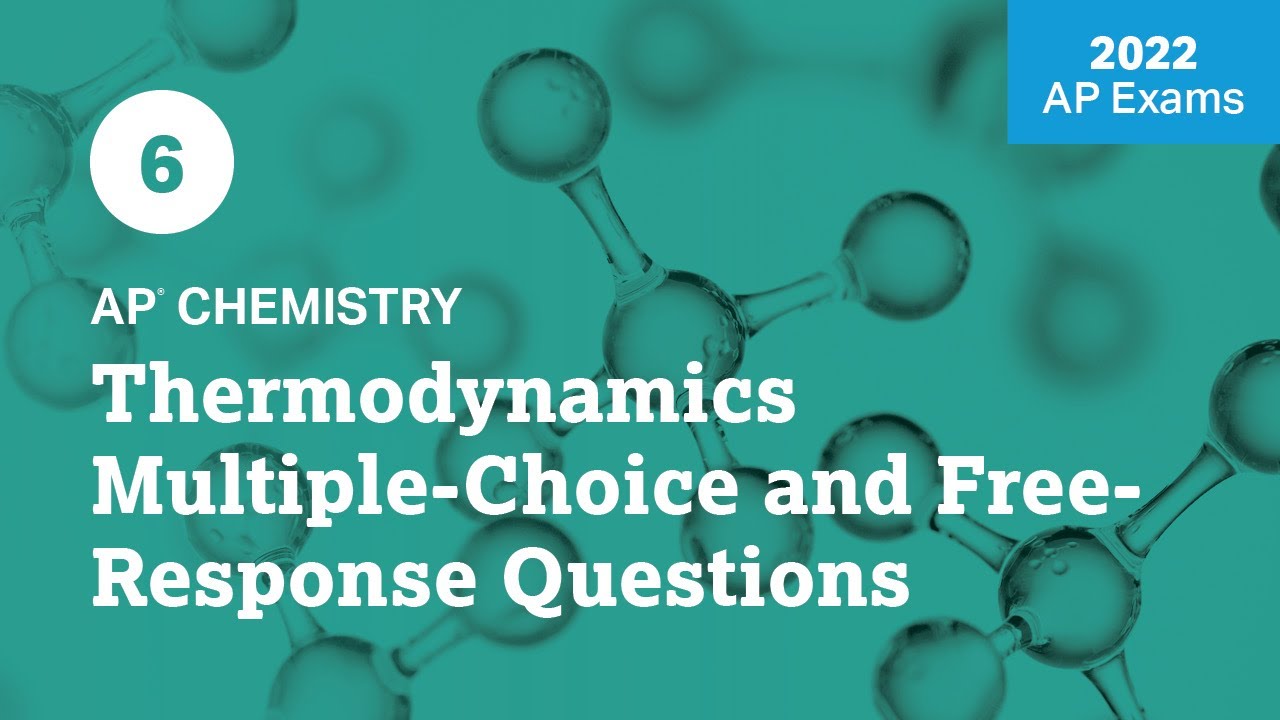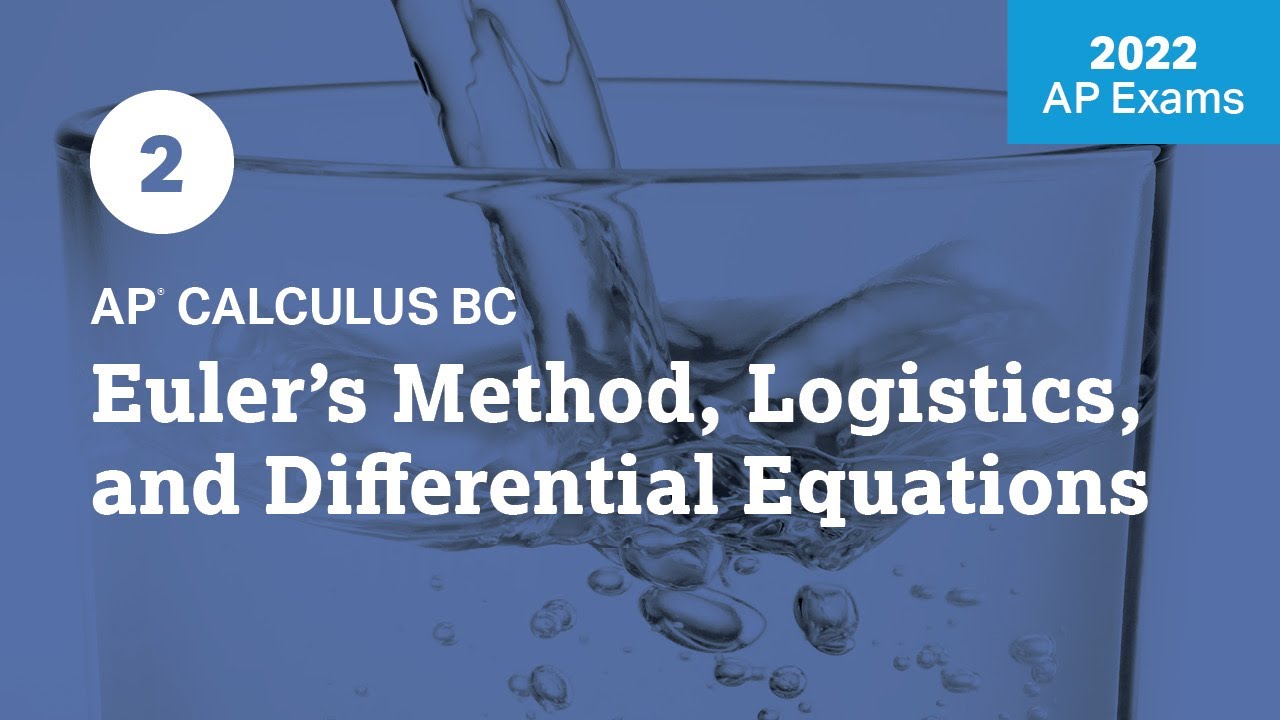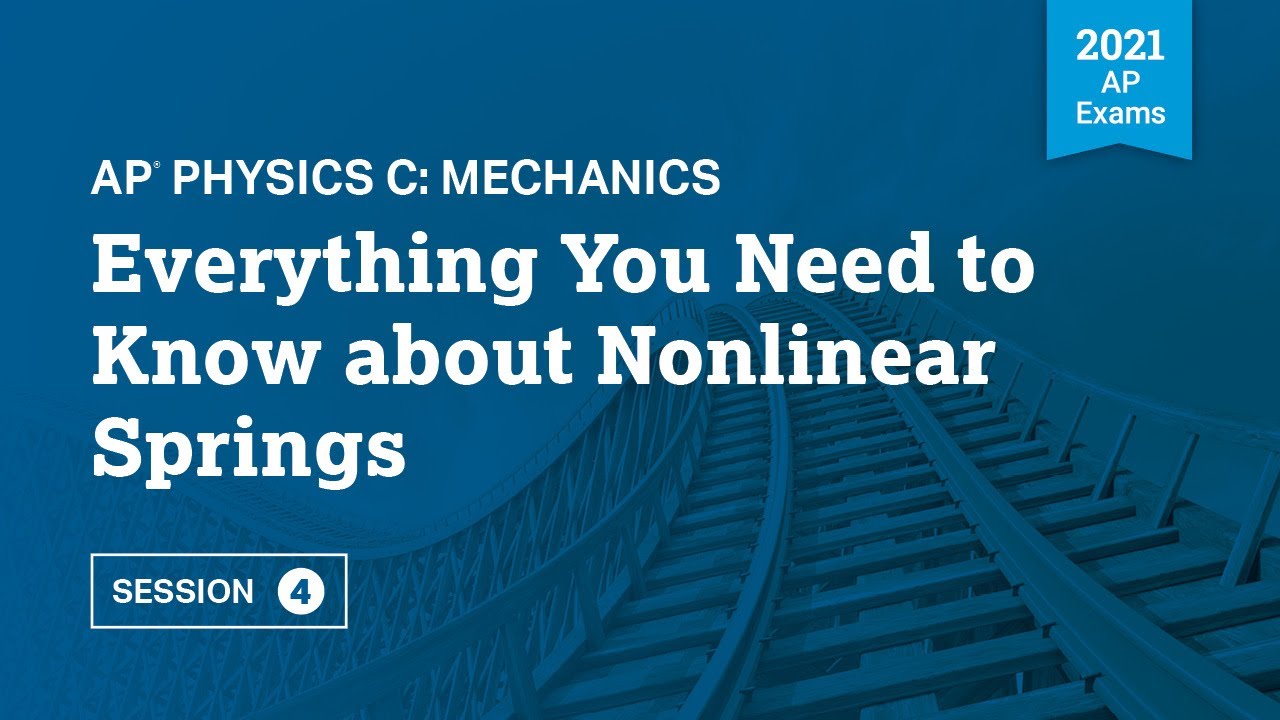AP Environmental Science Semester 1 Exam Review
TLDRIn this engaging AP Environmental Science semester review session, the instructor takes students through a comprehensive overview of Units 1 through 5, covering topics like biodiversity, ecosystems, biogeochemical cycles, population dynamics, and human impacts on the environment. With a lively and interactive approach, the instructor delves into complex concepts while addressing common student misconceptions, encouraging questions, and providing real-world examples. The review session aims to prepare students for upcoming semester exams, fostering a deeper understanding of environmental science principles and their practical applications.
Takeaways
- 🔑 The video is a review session for AP Environmental Science (APES) covering Units 1 through 5, to help students prepare for exams.
- 📝 Important concepts covered include biodiversity, ecosystem services, island biogeography, ecological succession, carrying capacity, demographic transition, El Niño and La Niña, and effects of human activities like deforestation, agriculture, and mining.
- 🌳 Selective cutting of forests is preferable to clear-cutting, as it helps preserve habitat, anchor soil, and provide shade.
- 🌾 Genetically modified crops can increase yield but reduce genetic diversity, while synthetic fertilizers can lead to eutrophication and other environmental issues.
- 🐄 Meat production is inefficient in terms of land, energy, and water use due to the energy lost between trophic levels.
- ⛰️ The rain shadow effect occurs when air loses moisture on the windward side of a mountain range, resulting in drier conditions on the leeward side.
- 🌎 Biomes are determined by latitude and related temperature and precipitation patterns, which shape the adapted organisms found in each biome.
- 💧 Urban stormwater runoff carries pollutants like sediment, fertilizers, and oils into water bodies, necessitating mitigation strategies like rain gardens and permeable pavement.
- 👥 The instructor encourages active participation from students, answering questions and fostering an engaging learning environment.
- 📚 Regular review and preparation are emphasized as keys to success on the APES exam and building a strong foundation in environmental science.
Q & A
What is the purpose of this lecture/review session?
-This is an AP Environmental Science (APES) semester one review session, covering units 1 through 5. The purpose is to help APES students prepare for their upcoming semester exams by reviewing the key concepts from these units.
What advice does the lecturer give regarding the term 'biodiversity'?
-The lecturer advises students not to mix up the terms 'species', 'population', and 'organism' when discussing biodiversity. Students should specify which level of biodiversity (ecosystem, species, or genetic diversity) they are referring to.
Why are estuaries considered highly productive ecosystems?
-Estuaries are highly productive because they receive a mix of fresh and saltwater, as well as a rich input of nutrients from rivers. The unique combination of saltwater and fresh water supports diverse organisms adapted to these conditions.
How does the lecturer explain the difference between photosynthesis and respiration in the carbon cycle?
-The lecturer explains that photosynthesis and respiration are balanced sides of the carbon cycle. Plants take in carbon dioxide and release oxygen during photosynthesis, while organisms (including plants) take in oxygen and release carbon dioxide during respiration.
What is the importance of resource partitioning, as mentioned in the lecture?
-Resource partitioning is important because it reduces competition between organisms for the same resources. It allows different organisms to utilize different parts of a shared resource, such as different parts of a tree for nesting, thereby reducing direct competition and increasing their chances of success.
How does the lecturer describe the demographic transition model?
-The lecturer describes the demographic transition model as a theory that explains population growth patterns in four stages. Stage 1 has high birth and death rates, Stage 2 has a high birth rate but a declining death rate, Stage 3 has a declining birth rate and slower population growth, and Stage 4 has low birth and death rates with little to no population growth.
What is the significance of the stomata in leaves, according to the lecture?
-The lecturer explains that the stomata in leaves play a crucial role in air filtration. The stomata can trap pollutants from the air, and the leaves themselves can catch particulate matter, thereby helping to filter the air.
What are the negative impacts of clear-cutting forests, as discussed in the lecture?
-The negative impacts of clear-cutting forests include soil erosion, habitat loss, increased turbidity in nearby water bodies due to sediment runoff, and the loss of shade for soil and water, which can lead to increased temperatures.
How does the lecturer explain the inefficiency of meat production?
-The lecturer explains that meat production is inefficient in terms of land, energy, and water usage due to the second law of thermodynamics. A significant amount of energy is lost when crops are fed to animals for meat production, as opposed to directly consuming the plants.
What is the importance of understanding specific pollutants in urban stormwater runoff?
-The lecturer emphasizes the importance of understanding and identifying specific pollutants (such as salt, sediment, fertilizers, pesticides, oil, and gasoline) in urban stormwater runoff, rather than just referring to pollution vaguely. This level of detail is likely to be required in exam questions or FRQs (Free Response Questions).
Outlines
🌍 Welcome and Introductions
The presenter welcomes everyone to the AP Environmental Science (APES) semester one review session. They mention that the session will cover Units 1-5 and emphasize Units 3-5 more since they make up a larger portion of the exam. The presenter introduces Kyra, a former APES scholar and moderator, who will assist in answering questions and providing additional information during the session.
🌳 Unit 1: Ecosystems and Biogeochemical Cycles
This section covers key concepts from Unit 1, including the differences between species, populations, and organisms in the context of biodiversity. It also discusses estuaries and their importance as productive ecosystems due to the mixing of fresh and saltwater. The carbon cycle is explained, highlighting sources, sinks, photosynthesis, and respiration. The concepts of net primary productivity (NPP) and gross primary productivity (GPP) are introduced, along with their calculations.
🐻 Unit 2: Biodiversity and Population Ecology
The importance of understanding the three levels of biodiversity (ecosystem, species, and genetic) is emphasized. Ecosystem services are discussed, with explanations of provisioning, regulating, supporting, and cultural services. The concepts of island biogeography and succession (primary and secondary) are covered, including the role of pioneer species and the formation of climax communities.
🌎 Unit 3: Earth Systems and Resources
This section covers the differences between generalists and specialists, as well as r and K-selected species. The theory of demographic transition is explained, including the four stages and their characteristics. The concepts of carrying capacity, biotic potential, and logistic growth are discussed, with an emphasis on understanding the factors that influence population growth rates.
🌋 Unit 4: Earth Systems and Resources (Continued)
The different types of plate boundaries (divergent, convergent, and transform) are briefly explained. Soil properties, such as texture, permeability, and pH, are discussed, along with their importance for plant growth and nutrient availability. The El Niño and La Niña phenomena are covered in detail, including their effects on trade winds, upwelling, and weather patterns in different regions.
🌾 Unit 5: Land and Water Use
This section covers the effects of clear-cutting versus selective cutting on soil erosion, habitat loss, and water quality. The role of trees in air filtration through their stomata is highlighted. Agricultural practices, such as genetically modified organisms (GMOs), synthetic fertilizers, and pesticide resistance, are discussed. The environmental impacts of meat production, mining, and urban stormwater runoff are also covered, along with potential mitigation strategies like rain gardens and permeable pavement.
☁️ Weather and Climate Concepts
The rain shadow effect is explained, illustrating how mountain ranges can create arid conditions on their leeward sides due to the precipitation occurring on the windward side. The Coriolis effect, which causes the apparent deflection of winds due to the Earth's rotation, is also discussed in relation to El Niño and La Niña patterns.
🌏 Biomes and Environmental Patterns
This section provides an overview of different biomes, such as tundra, boreal forests, temperate grasslands, subtropical deserts, and tropical rainforests. The distribution of biomes across latitudes is explained, emphasizing the importance of temperature and precipitation patterns in determining the characteristics of each biome.
Mindmap
Keywords
💡Biodiversity
💡Ecosystem Services
💡Carrying Capacity
💡Succession
💡El Niño and La Niña
💡Soil Properties
💡Genetically Modified Organisms (GMOs)
💡Eutrophication
💡Pesticide Resistance
💡Urban Stormwater Runoff
Highlights
Biodiversity is such a critical concept that students often lack details in for lack of a better term, students just don't remember the three levels of biodiversity and they don't specify them on frqs so if you if you have an frq as part of your final and you can incorporate biodiversity loss or biodiversity being impacted in some way, to an frq especially if it's about human impacts on a given ecosystem being able, to actually link it to one of these, three levels of biodiversity is really key.
Estuaries are places where the river meets the ocean, and they're going to be highly highly productive for a couple reasons one, they're a mix of salt and fresh water so, organisms have to be uniquely adapted to, those conditions that's an important, thing to remember, but also they're bringing so many, nutrients down the river and dumping, them into this area.
The carbon cycle is a really important cycle, biogeochemical cycle that is to, understand in unit one so with the, carbon cycle you want to remember here, that sources are things that are giving, off carbon dioxide to the atmosphere or, any form of carbon really you could give, off methane as well and a sink is a, reservoir so something that stores, carbon.
The biggest mistake that students, make is that it is a rate, of energy production so it's not just, photosynthesis it's an actual rate of, energy production and we express that in, energy per area per time so kilocalories, per meter squared per year.
Biodiversity is such a, critical concept that students often, lack details in for lack of a better, term, students just don't, remember the three levels of, biodiversity and they don't specify them, on frqs so if you if you have an frq as, part of your final and you can, incorporate biodiversity loss or, biodiversity being impacted in some way, to an frq especially if it's about human, impacts on a given ecosystem being able, to actually link it to one of these, three levels of biodiversity is really, key.
Ecosystem Services first of all are ways, that ecosystems benefit humans, monetarily or financially, so they have to have some what's called, instrumental value or clear demonstrated, value to us.
Island biogeography in a nutshell we're, going very quickly here for Island biogeography, basically as you get closer to the, mainland and larger in size you're going, to have a higher species richness you're, going to support more total species one, due to Greater ecosystem diversity but, two due to Greater ease of migration, from the mainland to these Island, habitats on the other side as you get, smaller in Island size or as you get, further away from the mainland you're, going to have lower species richness for, the opposite reason lower ecosystem, diversity lower fewer available niches.
The big thing with an El Nino you to, remember if you can remember this it, makes everything so much easier, you have to remember that the trade, winds reverse course, they weaken and, in certain instances they do actually, reverse directions but rather than, strong east to west we get a weakening, and potentially even the movement from, west to east of of winds.
When you clear cut you remove all of the, vegetation in an area you retrieve you, remove all of the trees Roots so now the, soil can easily erode away into the, river.
GMOs are genetically modified crops, that can be genetically engineered to, grow faster grow larger more yield per, acre they can also be genetically, modified to resist pests so BT Corner BT, crops are a great example, pests don't eat them because they have, this genetic trait that allows them to, actually Create A protein that the pest, is killed when it eats eats the plant so, it's deterred from doing that.
Eutrophication is the process of too, many nutrients or excess nutrients, entering a body of water so when you use, synthetic fertilizer on your crops as a, farmer it's very possible and in fact, likely for that rainfall to carry that, nitrate off of your fields and into, nearby Waters which leads to an algae, bloom covers the surface and uses up, oxygen when these algae die because the, decomposers do this aerobic, decomposition and use up that oxygen so, that can lead to a dead zone.
The big thing we need to, know here is that meat is inefficient, when it comes to land energy and water, use and the reason for this is the, second law of thermodynamics.
Sustainable agriculture here, and talk about wind breaks because they, are a great way to do sustainable, agriculture the only problem, is for some reason, these slides that I have up just don't, have, the sustainable agriculture stuff in, them, so let me see if I can pull them up, in the meantime though a Windbreak is, going to do what it sounds like it's, going to break the wind so that those, trees or that those shrubs that got hit, with the wind prevent some of that wind, from carrying away soil with it.
Urban stormwater runoff very, important concept unfortunately because, I'm not in present mode some of my, slides are covered up here, but you guys get the idea that all of, the pollutants that are on an urban, surface because it's impermeable, meaning that the water can't sink in and, infiltrate down beneath it are going to, be carried into a storm drain and then, entered into a body of water in this, case the Chesapeake Bay.
The rain shadow, effect basic idea is when you have prevailing, winds coming in off a body of water, they're picking up a lot of moisture, from that water through evaporation, and they're going to deposit that, moisture onto land because that air is, going to in this case hit a mountain and, rise up and it's going to start to cool, now air that's cooler can't hold as much, moisture and so that moisture is going, to be lost it's going to rain down on, this windward side of the mountain the, side that's facing the wind.
Transcripts
Browse More Related Video

AP Environmental Science Unit 1 Review (Everything you Need to Know!)

2022 Live Review 6 | AP Chemistry | Thermodynamics Multiple-Choice and Free-Response Questions

2022 Live Review 5 | AP Chemistry | Challenging Free-Response Questions

2022 Live Review 2 | AP Calculus BC | Euler's Method, Logistics, and Differential Equations

Ch 3 | Basic Maths ( Part 1 ) | Mathematical Tool | Differentiation & Integration | JEE | NEET | 11

2021 Live Review 4 | AP Physics C: Mechanics | Everything You Need to Know about Nonlinear Springs
5.0 / 5 (0 votes)
Thanks for rating: